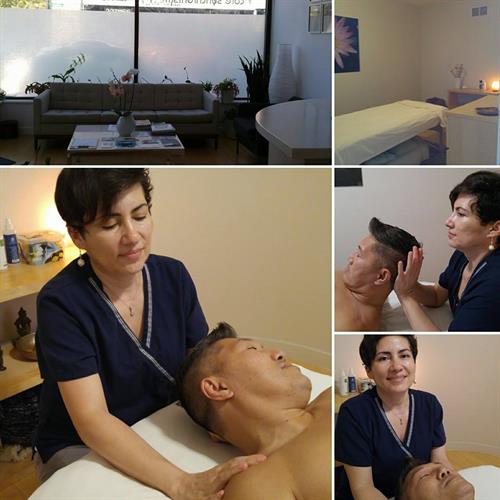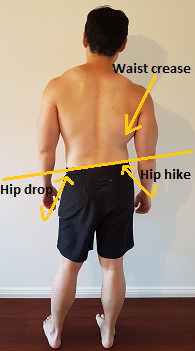Muscle imbalance forces the body into a position where muscles can’t work efficiently and puts lots of stress on weak areas. One example of this is between the anterior (the front of your body) and posterior chains of the body (the back of the body). Sedentary lifestyle and desk jobs force anterior chain to get tight and posterior chain to weaken.
Posterior chain muscles are those that are located on the back of our body. That includes all muscle groups from the upper back all the way to hamstrings, glutes and calves. Anterior chain muscles, on the other hand, are those on the front – chest, abs, quads, etc.
The muscles in the posterior chain play a huge role in everyday activities, such as picking something up off the ground, sitting down and standing back up, or jumping. Posterior chain muscles usually don’t get the attention they require. Most of the time we are told to work on the core muscles which isn’t wrong but we have to look at the entire body as whole not only as parts.
Why it’s important
Together anterior and posterior chain muscles help to keep the body straight. And prevent it from falling forwards or backwards.
Any movement that ‘focuses’ in front of us (like pushing, doing sit ups, extending legs, etc.) will target anterior chain muscles. And everything that ‘focuses’ behind us (like pulling, extending back, etc.) will strengthen posterior chain.
Spending hours working / studying at the laptop or just looking down to scroll through social media or news does not help to build good posture.
Like it or not – our mothers were right when they told us to keep our backs straight. Hunching forwards is double the trouble. It’s a bad habit and it comes from having weak muscles. And that has an effect on our results as athletes as well. In fact, one of the best ways to reduce injury risk, as well as build power & explosiveness is to strengthen posterior chain muscles.
Besides athletic benefits, there are many other reasons for paying attention to posterior muscles and keeping good posture. Breathing gets easier and deeper, digestion improves, internal organs don’t get compressed and overall well-being improves.
Muscle imbalance and overall well-being
There is also one less obvious reason why poor posture and imbalance towards anterior chain is bad. Due to improper body position, some of internal organs get compressed and don’t operate as efficiently as possible.
For example, hunching forward compresses the stomach and restricts the blood flow to the gut, which interferes with proper and fast digestion and might cause bloating and gas.
Poor posture also limits breathing by compromising lung capacity, while tight muscles restrict blood flow – both very important things for athletic performance and overall well-being.
Strengthening the posterior chain and compensation
Training to strengthen the posterior chain reduces the risk of lower back and knee injuries, as well as creates symmetry and balance to the body, countering the dominant anterior chain muscles. When you train you want the best results and outcome but if a group of muscles have been sedentary and inactive the body will revert to compensation patterns and these can become dysfunctional and leads to chronic pain or further weakness.
The body uses compensation patterns to perform motions when strength and mobility are not sufficient. Compensation patterns can form when a muscle or group of muscles is unable to properly move a joint through a range of motion. They can also form when there is a restriction within a joint that does not allow the joint to move freely, regardless of muscular strength. Muscle imbalance forces the body into a position where muscles can’t work efficiently and puts lots of stress on weak areas.
Essentially, a compensation pattern is an alternate neuromuscular strategy that the body employs when the naturally prescribed neuromuscular strategy is no longer a viable option to use in the creation of a given movement.
Walking on a limb after an ankle sprain is an example of a compensation pattern. The body simply replaces its normal gait (walking) mechanics with an alternate version or strategy that limits the amount of weight placed on the injured ankle.
The importance of treating dysfunctional patterns to a strengthening routine:
Briefly, Muscle energy technique like Neurokinetic Therapy ultimately looks at compensation patterns from a motor control perspective. Neuroscience tells us that the Motor Control Center (MCC) of the brain in the Cerebellum stores movement patterns, and this occurs in normal development, in response to our repeated habits and activities, or as a result of injury as the body attempts to protect itself and avoid pain. As I explained above often times these movement patterns may be faulty or dysfunctional, and pain results from imbalance, overuse, or overloading of tissues, and the site of pain may not even be in the area of the dysfunction, but merely is a result of it.
Important to Recognize
Having the ability to recognize patterns of compensation and Movement Dysfunction provides the individual with the opportunity to correct and neutralize the risks and damage associated with patterns, as well as allows the individual to develop more efficiency and integrity in regard to biomechanical functions and Movement Quality.
Unfortunately, if uncorrected or undetected, the patterns of compensation and associated Movement Dysfunctions can and will disrupt Human Movement, increasing the risk of injury and damage to the body, even if the individual is unaware of these risks.
If you think you might have some compensation going on, here are a few things that you can look out for:
1) Chronic muscle tightness no matter how much you stretch
Most people will spend a significant amount of time stretching their hamstrings and they never make any progress because they never strengthen the weak muscle that is causing the problem.
2) Unusual tenderness in the same muscles over and over again
If that nasty trigger point you’ve been working on keeps coming back no matter how hard or how long you massage it out, it’s because there is some biomechanical deficiency.
3) That one muscle that always seem to get sore during or after an activity
This is probably the muscle that is overworking to compensate for some other area of weakness. You have to find that weakness and correct it!
4) The same recurring injury
If you always get tendonitis, shin splints, IT Band Friction Syndrome, or any other type of overuse injury on the same side and the same body part, there is some underlying cause that has not been addressed.

